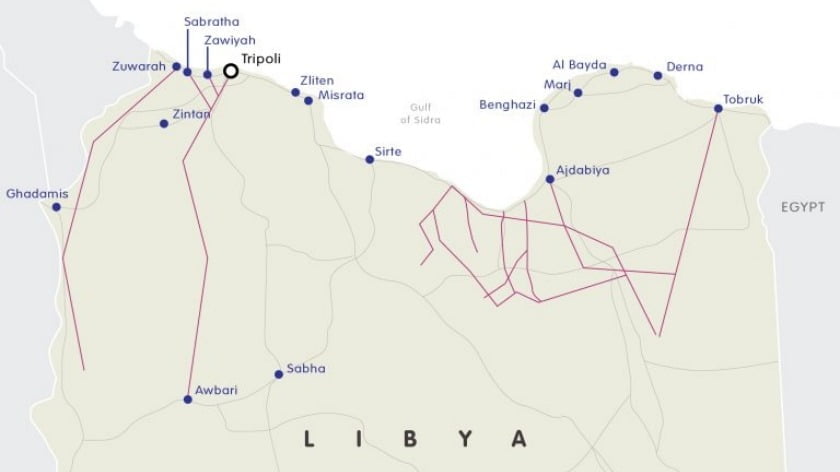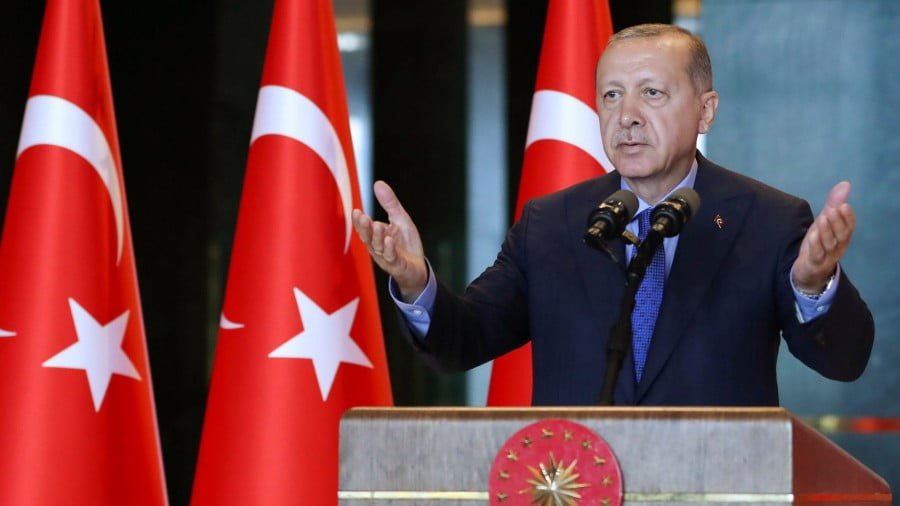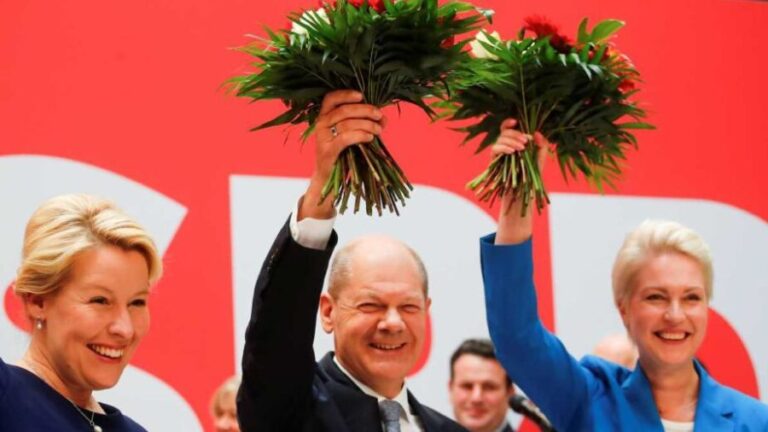A Reconsideration of Domestic Challenges to Achieving a Peaceful Settlement in Libya
One of the greatest difficulties Libya faces is the restoration of legitimacy to governance and the reconstruction of the State. The ‘transitional’ arrangements for governing Libya were imposed by the ‘international community’ after NATO destroyed the country’s State institutions and infrastructure with massive bombardments in 2011, supposedly to enforce a ‘no-fly zone’ imposed by a Security Council resolution (accompanied by a massive looting of Libya’s assets and reserves in Europe and the US).

The current situation of the country (as of 2016) is ‘stateless’ (due to the) chaos and instability that resulted from the UN-authorised bombing campaign of 2011. It is likely that how Libyans perceive the main belligerents’ (the ‘LNA’ and ‘GNA’) relations with their foreign benefactors, and how their respective military forces conduct themselves in areas under their control, will be at least as important as victories on the battlefield in determining the future course of the conflict and whether and on what terms peace can be achieved and viable State institutions established.
Libyan society, demographic features and geography
Libya comprises three principal regions—Tripolitania in the northwest, Cyrenaica in the east, and Fezzan in the southwest. The Ottoman authorities recognized them as separate provinces. Under Italian rule, they were unified to form a single colony, which gave way to independent Libya. For much of Libya’s early history, both Tripolitania and Cyrenaica were more closely linked with neighbouring territories than with one other. Most of the country is covered by the Sahara desert, and most of its population is concentrated along the coast and its immediate hinterland.
The two main cities are Tripoli and Benghazi. They contain about one quarter of the total population. Tripoli, with the estimated population of about three million people, is the country formal capital and an important economic centre. Benghazi, with the estimated population of more than one million people, is the primary city in Cyrenaica. The modern cities have developed around the old city centres (medinas), with satellite towns and villages in surrounding oases. Shantytowns housing more recent migrants are also found near the two cities.
Other important centres include Gharyān, Al-Khums, Misurata, Tājūrāʾ, Sūq al-Jumʿah, Janzūr, and Zawiyah in the west and Ajdābiyā, Al-Marj, Al-Bayḍāʾ, Derna, and Tobruk (Ṭubruq) in the east. These cities are primarily regional administrative and commercial centres with some light industry. Several have petroleum refineries and petrochemical installations.

Libyan society is made up primarily of three main ethnic groups, Arabs, Berbers and Tebu. The Arabs are the majority inhabitants of today’s Libya, and brought Islam to the region when they first arrived from Arabia during the seventh century (640 AD). The steady influx of Arab groups over time led to political upheavals and the gradual Arabization of many of Libya’s Amazigh populations. The result was that by the 20th century the great majority of Libya’s inhabitants were Arabic-speaking Muslims of mixed descent.

The Berbers are the indigenous inhabitants of Libya and the Sahara. There are numerous Berber tribes found in East Libya, West Libya, and across the entire Sahara desert, where they have been since the beginning of civilisation. Their number is difficult to ascertain, since by their nomadic nature the Tuareg of the Sahara were not fully included in any census. However it was widely estimated that the Berbers constitute between 10% and 23% of the population of Libya, and therefore assuming an average of 17% would give just under one million Berbers. Generally, the western side of the Libyan Sahara is inhabited by the Tuareg, while the eastern side is the home of the Tebo.

Some experts noted that the population of the Berbers in 1950s was just under 50% of the total population, and that the current drop in percentage is due to government policies, like the sudden increase of Arab nationalities granted by both King Idris and Gaddafi to large numbers of Tunisians, Egyptians and other (so-called) “returned Libyans” – just as today’s transitional rulers reportedly are doing…
Libya’s total population is estimated at around 5 million. There are an estimated 1.5 million immigrants. Establishing an accurate census will be one of the most fundamental starting points for re-establishing legitimacy to the State once the violence subsides and some sort of order returns to the country. The Libyan website Temehu comments in this respect:
On the 6th of July 2018 former rebel prime minister Mr. Mahmoud Jibril warned the Libyans of the failure of the forthcoming elections (of 2018) due to “fake IDs” being issued by Libyan officials to gather voters for their election campaigns. He says that there is widespread fraud concerning the so-called “National Number”, pointing out that this may endanger the outcome of the forthcoming elections where the losing political parties may doubt the results on the basis of fake voters.
It has been reported previously that the authorities in Tripoli are implicated in the illegal trade in human beings and that many immigrants were given fake Libyan IDs. The same practice was observed in the military where many militias (from both the Muslim Brotherhood-controlled Tripoli and from the Hor-controlled Benghazi) are enlisting immigrants and mercenaries in their fight against each other and against the so-called foreign terrorists. As we have reported in this website, previous elections, the elections hailed as successful by the colonial masters, have barred the Berbers from taking part in party elections and therefore were never fair or transparent.
Two days after Jibril’s warning the number of Libyans was reported by Libyas channel to have reached 7.7 million people (including Libyans and non-Libyans). According to Mr. Bouker, the former head of the Civil Registry Authority, tampering with the civil register and the national number had resulted in increasing the number of Libyans to nearly 7.7 million people, thereby endangering the national security of the country. That is a jump of one million people in just over two years…
Mr. Bouker said he has a copy of the original database that can reveal the fake one million identities that were added in the past two years, and that restoring the original database would not take more than 24 hours. It is not known who could restore the database to its state before the 1969 foreign operation, and/or restore the Sahara motherland to its rightful owners (the Tuareg Berbers) before its desecration by the colonial French, Italian and the British. One thing is clear; there is a program to Arabise the Berbers of North Africa. Most of the reported violations in national identity reported in the past two years occurred in neglected Fezzan – the homeland of the Tuareg Berbers…
The major Arab centres of today’s Libya include Tripoli, Benghazi, Misrata, Zawiya, Sabratha, Khoms, Albayda, Darna, Tobruk and other smaller villages and settlements along the coast and in the interior. After the installation of Gaddafi in 1969 the arabisation of the Sahara was intensified by making Sabha the new capital of Fezzan. Nafousa Mountain in the west is the stronghold of the various Berber tribes, to the extent it was also known as the Berber Mountain, before it was renamed “The Western Mountain” by the ousted Colonel.
The oasis of Zuwarah in the western coast, the oases of Jalu and Awjla in eastern Libya, and the oasis of Ghadames at the edge of the Sahara are also Berber settlements; while the Sahara herself is still the homeland of the various Berber Tuareg confederacies, as they were for thousands of years the dignified keepers of the largest desert in the world – the empire without borders; before they were dispersed and split by colonial intruders into so many “countries”, without regard for their ethnic integrity or noble dignity. The Berber Tuareg confederacies have always resisted the imposed borders to desecrate and divide their sacred homeland, just as they still do today.
The Tebo … are without a doubt native to the region, especially to the Tibesti Mountain, whence the name Tibesti itself. Like the Berbers, they have been persecuted by the previous regimes of Libya, just as today their homes are being shelled by outlaws and sponsored rebels… LINK
The ‘Transitional’ Arrangements
The ‘Constitution’ is a temporary Constitutional Declaration (imposed by the National Transitional Council, which was installed on 3/10/ 2011). The main elements of the ‘internationally recognized government’ since then were a General National Congress (elected on 7/7/2012), followed by a Legislature (House of Representatives, elected on 25 June 2014) and an Executive (the UN-imposed Presidential Council (PC/ GNA, installed on 17 December 2015).
In Libya there are very few political organizations and groups with a nation-wide presence. The majority constitute local or regional actors, some of whom are relevant at the national level while representing the interests of their region or city. Many important participants, particularly outside of the largest cities, also have tribal allegiances.
Since the summer of 2014, political power has been split between two rival governments in Tripoli and in Tobruk, deriving from the transitional executive and legislative organs respectively. The latter was recognised by the international community before the creation of the Presidency Council (PC) – the body that acts collectively as head of state and supreme commander of the armed forces – in December 2015.

At the moment Libya has two main centres of power. The first is the Presidency Council (PC), which has been based in Tripoli since 30 March 2016. The PC is headed by Fayez al-Sarraj – a former member of the Tobruk Parliament, where he represented a Tripoli constituency – and it was created by the UN-brokered Libyan Political Agreement (LPA) in December 2015. According to this agreement, the PC presides over the Government of National Accord (GNA), also based in Tripoli. The GNA was to have been endorsed by the Tobruk-based House of Representatives (HoR) according to the agreement, but on two occasions the HoR has voted down the list of ministers. The GNA has had a string of major military victories over the last month following a large influx of weapons and fighters provided by Turkey.
The second centre of power is made up of the authorities based in Tobruk and Bayda, which were also supposed to work under the LPA. The House of Representatives (HoR) in Tobruk was envisaged as the legitimate legislative authority under the LPA. However, instead of working with the GNA the HoR endorsed the rival government of Abdullah al-Thinni which is based in the eastern Libyan city of Bayda.
The Libyan National Army (LNA), commanded by Khalifa Haftar is largely the successor to the Armed Forces of the Libyan Arab Jamahiriya, since it was formed by the Transitional National Council of Libya in 2011, from some of the late Gaddafi’s military personnel, as well as from parts of the opposition National Liberation Army.
The LNA supports the supreme legislative body of the State elected in 2014 – the House of Representatives, located in Tobruk. In March 2015, the House of Representatives officially appointed Haftar as Supreme Commander of the Armed Forces of Libya. In terms of foreign support, the LNA has received most assistance from Egypt and the United Arab Emirates.
Two other institutions are based in Tripoli and play a major role in Libya’s politics. The Central Bank of Libya, which is where oil money is paid and government money is disbursed. Though pledging loyalty to the PC, it has had an uneasy relationship with it. The National Oil Corporation (NOC) is also formally loyal to the PC but has had relatively good working relations with Haftar’s LNA after its seizure of eastern oil ports.
Several other types of groups and sectors of society are also competing for power: domestic and foreign armed groups; “city-states”, particularly in western and southern Libya; and the tribal militias, which are primarily distributed throughout eastern and southern Libya (particularly those derived from Tuareg and Tebo communities). While many have been drawn into tactical or strategic alliances with the factions based around the Government of National Accord (GNA) or Libyan National Army (LNA), many have retained a substantial degree of autonomy and have not committed to one side or the other.
Libya’s jihadist network can be divided along generational lines, starting with those who emerged in the 1980s. Many from that older generation fought against Soviet-backed forces in Afghanistan. These veterans later created a number of groups in opposition to Muammar Gaddafi, the largest of which was the Libyan Islamic Fighting Group (LIFG) which is now defunct.

However, Libya still hosts a range of jihadist groups, from the Islamic State group (ISIS) to al Qaeda-linked groups, to other Salafi-jihadi factions. Some are domestic and based in particular regions while others – particularly ISIS affiliates – include many foreigners. Local returnees from Syria helped form Libya’s first ISIS affiliate in the eastern town of Derna in 2014. Many had fought as part of ISIS’s al-Battar unit in northern Syria before returning home to replicate the model with help from senior non-Libyan ISIS figures. The leadership of ISIS in Libya has always been dominated by foreigners.
ISIS leader Abu Bakr al-Baghdadi recognised the presence of ISIS in Libya in late 2014, declaring three wilayats or provinces: Barqa (eastern Libya), with Derna as its headquarters; Tarablus (Tripoli), with Sirte as its headquarters; and Fezzan (southwestern Libya).
ISIS controlled the central Mediterranean coast of Libya around the city of Sirte until a Misratan-led operation (Misrata factions are currently allied with the GNA) to defeat it. ISIS has carried out attacks in all major Libyan cities, including the capital Tripoli. ISIS has also had a presence in other parts of Libya, including Benghazi, where it was largely defeated by Haftar’s LNA. Its affiliates have also mostly been driven out from the towns of Derna and Sabratha.
As described in a recent South Front report, the current balance of forces is as follows:
The LNA and the House of Representatives
- Regular ground forces, consist of two mechanized infantry, one tank and three artillery brigades, as well as one brigade of special forces “Saiga”, two brigades of the “Deterrence force” numbering approximately 7,000;
- Independent groups formally integrated into the LNA – up to 12 thousand fighters;
- Foreign military contingents consisting of private military contractors including Sudanese and Chadians;
- Zintan brigades from the city of Zintan. This is an independent power, currently allied with the LNA;
- Petroleum Facilities Guard (PFG) is mostly allied with the LNA. The PFG controls fields and refineries in the center and in the east of the country;
- The Egyptian Armed Forces as a force directly involved in the Libyan conflict. According to various sources, Cairo has up to 3000 instructors and military personnel involved in the conflict.
The GNA bloc
- The Big Tripolitan Quartet, on which al-Sarraj personally relies: Special Deterrence Forces, Tripoli Revolutionary Brigade, Central Abu Salim Security Forces and Navashi Brigade. These groups were given an officiall status by the Ministry of Internal Affairs.
- Forces loyal to the GNA, including the 7th Kani Brigade of the Presidential Guard from Tarhuna, military formations of the Avalyad Suleiman tribe;
- Misrata forces – various groups from Misrata on which Vice Prime Minister of the GNA Ahmed Maiteeq relies. This is an independent force currently allied to the GNA;
- National Mobile Forces consist primarily of Amazigh;
- Ghwell’s Libyan National Guard – allied to the Misrata clans and thus to the GNA;
- Shura Council of Benghazi Revolutionaries;
- Syrian mercenaries and militants, brought in by Turkey – approximately 5,000 people;
- Turkish Armed Forces, as a force that’s directly involved in the conflict.
The LNA is supported internationally by Egypt, the UAE, Russia and Saudi Arabia. The GNA is supported by Turkey, Qatar, and NATO member states in the face of USA, Italy, France and the UK.
ISIS has three separate formations in Libya:
- Wilayat al-Fezzan in the province of Fezzan in the desert in the south;
- Wilayat al-Barqah in the province of Cyrenaica in the east,
- Wilayat al-Tarablus in the province of Tripolitania in the west.
Estimates of the total number of active members vary from 800 to 5,000.
After the defeat from the LNA, the Ansar al-Sharia group virtually disappeared, and became a part of ISIS. ISIS also included part of the fighters of the Shura Council of Dern and the Shura Council of Sirte. ISIS is a constant adversary of the LNA and situational opponents of the GNA.
As the conflict drags on, how the major tribes and regional groups and communities throughout Libya perceive and respond to the factions aligned around the GNA and LNA could be at least as important as whether Egypt enters openly and in force, particularly for long term prospects.
Ongoing developments in terms of their support for one side or the other might also provide some insights into how the Libyan people in different areas and sectors of the society are evaluating what is happening and whether one side or the other is perceived as being more ‘legitimate’. They may also provide clues as to whether some of them are being bought off by deep pockets or weapons supplies, or by some other trade-off.
Source: South Front







